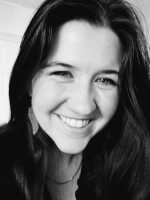There’s significant evidence that the novel coronavirus can spread through tiny particles that linger in the air. Thanks to a University of Colorado chemistry professor, now there’s a free tool to measure those risks.
It’s called the .
It’s not very pretty, and can be hard to use for those who aren’t spreadsheet-savvy. But it can help you identify where there’s a high chance of viral spread, like if you’re on a bus and people aren’t wearing masks, or if your choir is practicing outside instead of inside a church.
University of Colorado, Boulder's created the tool over the last month.
“At the beginning, you know, I was just trying to make sure I understood things. And then people kept asking me for practical items, and I realized the tool would be very useful,” he said, noting that it could help people like educators who want their students to be safe in the fall.
Jimenez is among the 239 experts who on Monday to acknowledge that the virus is airborne.
"Studies by the signatories and other scientists have demonstrated beyond any reasonable doubt that viruses are released during exhalation, talking, and coughing in microdroplets small enough to remain aloft in air and pose a risk of exposure at distances beyond 1 to 2 m from an infected individual," the scientists wrote.
Jimenez’s own work includes studying aerosols in the environment, and he became interested in COVID-19 when his home country of Spain started seeing an outbreak. That got him wondering if this was like the SARS virus in 2003, which could be transmitted by aerosols from people’s breath.
“So I reached out to some friends, who basically are the world experts, and they said, 'Yeah, yeah, we think it’s going through aerosols but the WHO is stonewalling, and we don’t understand why,'” he said.
They tried working to convince the WHO, but when it was resistant, they decided to make their case to the entire scientific community and the public via the papers that were just published.
While Jimenez says they don’t quite understand why the WHO isn’t accepting this science, he does have a hunch: the organization doesn’t want to scare people by labeling it “airborne.”
“I think the most important thing is people shouldn’t be afraid," Jimenez said. "It’s not like the virus has changed. We think the virus has been doing this all along, and knowing about it allows us to protect us better.”
He added that healthcare workers may not face a very large risk from an aerosolized, or airborne, virus. That’s because hospitals tend to have good ventilation, doctors often wear masks and there's less of a chance of transmitting the virus through the air later on in the disease.
He explained that the virus is coming from the respiratory tract, and the amount of infectious virus there is highest when someone is just starting to feel sick.
“And the people who are in the hospital are not the ones where the symptoms are starting, they are there one or two or three weeks later when they’re really, really sick," he said.
That means less risk of airborne transmission in hospitals except during specific events like intubation. So other ways of spreading the virus, like person-to-person contact and asymptomatic coworkers, may be a larger risk in the hospital environment.
UPDATE: This story was updated on July 8, 2020, to more specifically explain what makes the virus less likely to be transmissted via aerosol in a hospital. Patient activites play less of a role than when the onset of symptoms occurs.
Find reporter Madelyn Beck on Twitter
Copyright 2020 Boise State Public Radio
This story was produced by the Mountain West ���ڱ��� Bureau, a collaboration between Wyoming Public Media, Boise State Public Radio in Idaho, KUNR in Nevada, the O'Connor Center for the Rocky Mountain West in Montana, KUNC in Colorado, KUNM in New Mexico, with support from affiliate stations across the region. Funding for the Mountain West ���ڱ��� Bureau is provided in part by the .
Copyright 2020 Boise State Public Radio ���ڱ���. To see more, visit . 9(MDAxNDQ2NDAxMDEyNzU2NzM2ODA3ZGI1ZA001))







